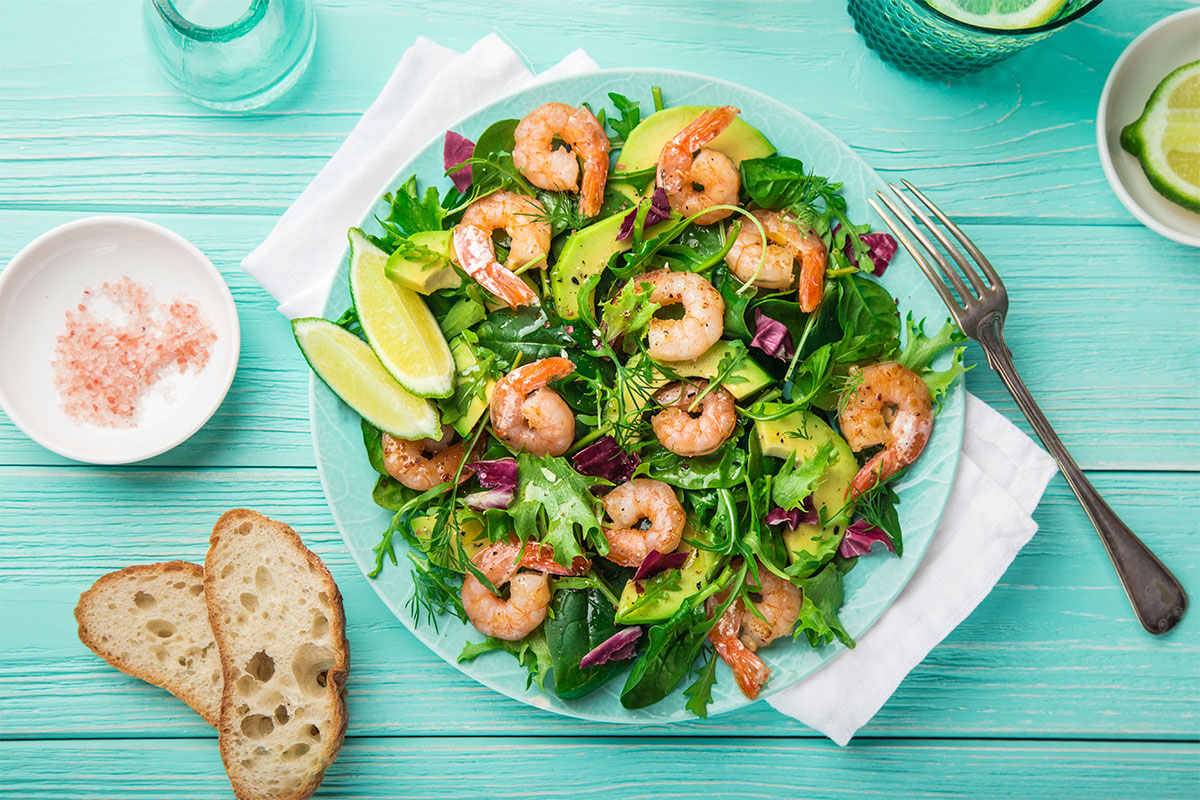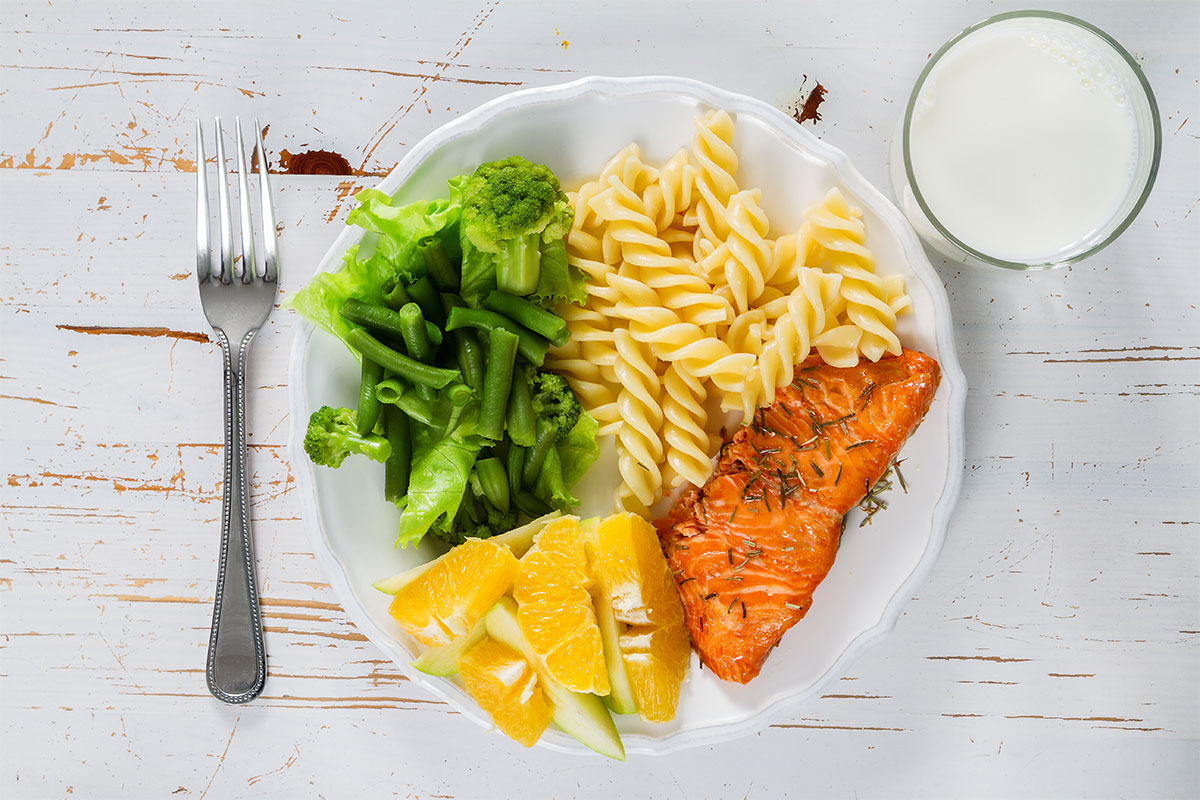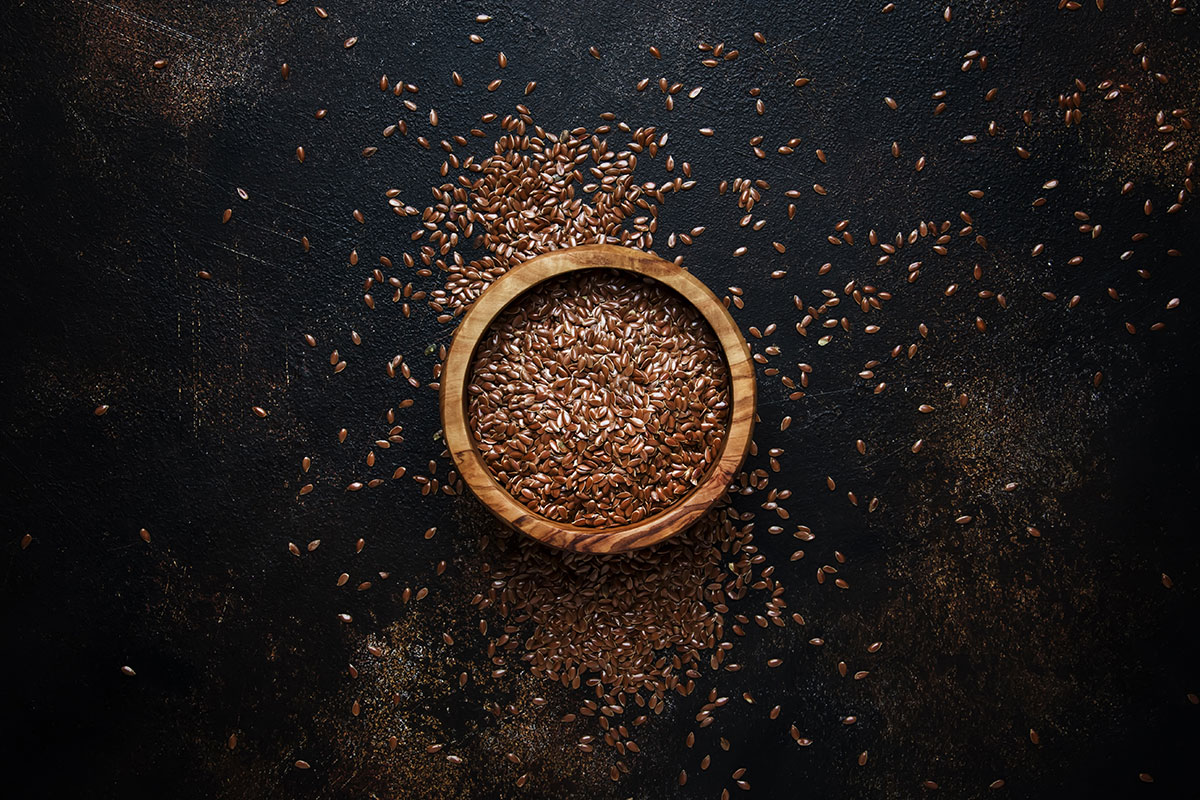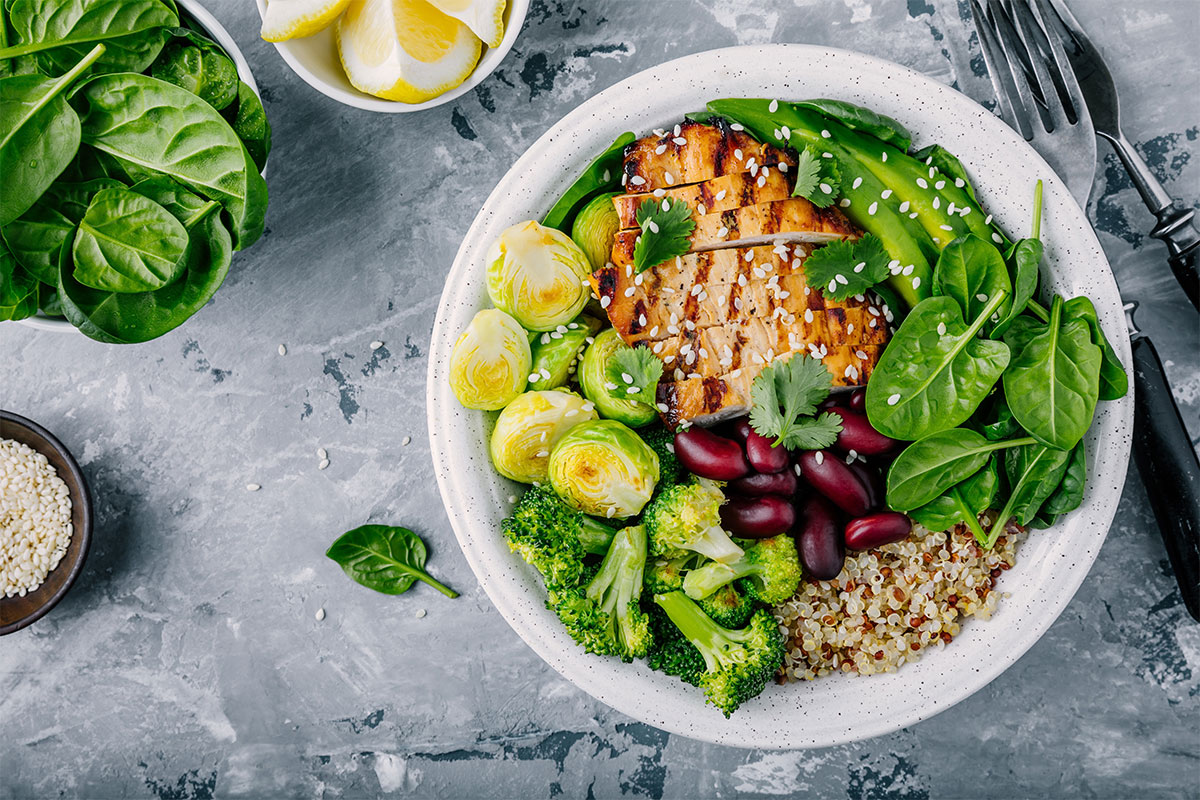Why am I Gaining Weight Despite Diet and Exercise? │ QA
If you’re careful with your nutrition, working out weekly, and still experiencing problems with your weight, take a moment to read this QA.


I am a 60-year-old male in fairly good shape. I’m lean with 16 to 17% body fat. I am in the gym three times a week, usually after work for about two hours each day. I start with 15 min. of cardio and I do abs every day between sets. I have a GNC protein shake for breakfast every day, oatmeal at 10am, salad for lunch, and on work out days I use a C4 pre-workout and a GNC Performix Shake post-workout. I then have a salad with lots of vegetables for dinner. I try very hard to limit sugar, carbs, and red meat.
I see improvements in my workout strength. I see definition improvements (no bulking) but the last little fat around the tummy remains. I started at 210 lbs. 6 years ago. I have been running around 170 to 175 lbs. for about 4 years now. The body fat number is staying around 17%.
What should I eat for lunch before working out? And what should I eat for dinner after I work out? And what should I eat on non-workout days?
– Larry B.

Kudos on your consistent power workouts! I would recommend that on your workout days your lunch salad include a legume, lean protein and healthy fat in addition to the greens since you have several hours to fuel before exercise. For example, choose one* from each column:
|
Greens |
Legume |
Lean Protein |
Healthy Fat |
Other Veggies x2 |
|
Spinach |
Edamame |
Chicken Breast |
Avocado |
Tomato, Carrot |
|
Kale |
Chickpeas |
Shrimp |
Olives |
Artichoke, Broccoli |
|
Mesclun |
Black Beans |
Tuna |
Diced Walnuts |
Cucumber, Radish |
|
Leaf Lettuce |
Kidney Beans |
Turkey Breast |
Sliced Almonds |
Celery, Red Onion |
|
Cabbage |
Cannellini Beans |
Salmon |
Pepitas |
Bell Pepper, Beet |
At dinner, I’d suggest including a starchy vegetable such as corn, yam or butternut squash and tofu or low-fat cheese to prop up your evening salad after exercise. You can maintain your normal eating regimen on non-workout days through a solid breakfast to replace the protein shake is advised. Just keep to the same calorie level.
Here are four options:
– Debbie J., MS, RD
This article should not replace any exercise program or restrictions, any dietary supplements or restrictions, or any other medical recommendations from your primary care physician. Before starting any exercise program or diet, make sure it is approved by your doctor.
Some questions have been edited for length and/or clarity.
 Have a nutrition question? Our registered dietitian is ready to help!
Have a nutrition question? Our registered dietitian is ready to help!
Email nutrition@lafitness.com or submit your question below and it may be featured in an upcoming article!
If you’re careful with your nutrition, working out weekly, and still experiencing problems with your weight, take a moment to read this QA.
Blood sugar control isn’t easy. These are Debbie’s top recommendations for how to address weight control with Type II Diabetes.
Does Intermittent Fasting give you enough time to pack the day's protein? Our registered dietitian helps clear up the confusion!


Please help me better understand portion control. How much is too much versus too little? Is there a chart to help explain the differences between men and women? Does age and weight matter? Are there ways to make portion controlling easier?

Controlling portions is a way to manage volume of food served and thus consumed. There is no specific way that is the best, just as there is no perfect serving for all people of any one particular food. A standard portion is a means to compare the nutritional content of different foods, e.g. “a half-cup of ice cream versus a half-cup of popcorn…”
The approach I recommend is a combination of a) the American Institute for Cancer Research’s “New American Plate” which has a greater proportion of plant foods than a typical diet and b) serving sizes adjusted for energy needs as suggested by MyPlatePlan. The key is to know your total caloric requirement first! This takes into account gender, age and weight.
Here are some common portion sizes provided in terms of measure with a corresponding way to “eyeball” the relative portion size in order to help you identify what portions look like. You can also practice by using your scale to weight various foods and then attribute a way to gauge that portion size by using objects such as your hands and fingers. See the examples below.
Bread, Cereal, Rice and Pasta (commonly 1-3 per meal)
Vegetables (goal: 2-3 per meal)
Meat and Protein (commonly 1-3 per meal)
Fats and Oils (limit to 1 per meal)
Fruit (commonly 2-3 per day)
Milk, Cheese and Dairy products (commonly 1-3 per day)
– Debbie J., MS, RD
This article should not replace any exercise program or restrictions, any dietary supplements or restrictions, or any other medical recommendations from your primary care physician. Before starting any exercise program or diet, make sure it is approved by your doctor.
Some questions have been edited for length and/or clarity.
 Have a nutrition question? Our registered dietitian is ready to help!
Have a nutrition question? Our registered dietitian is ready to help!
Email nutrition@lafitness.com or submit your question below and it may be featured in an upcoming article!
If you’re careful with your nutrition, working out weekly, and still experiencing problems with your weight, take a moment to read this QA.
Blood sugar control isn’t easy. These are Debbie’s top recommendations for how to address weight control with Type II Diabetes.
Does Intermittent Fasting give you enough time to pack the day's protein? Our registered dietitian helps clear up the confusion!


Does flaxseed help in increasing fertility and weight loss?
– Shamily BM

There has been a lot of chatter in the media regarding flaxseeds and fertility. Looking at the research, I found evidence to support its effect on menstrual cycle and hot flashes, but nothing conclusive regarding conception in humans. So, flaxseed may have an insignificant effect.
Flaxseeds are high in fiber which helps promote satiety so that appetite is dampened and fewer calories are consumed. Theoretically, this would translate into weight loss if people didn’t compensate elsewhere in their diets. Again, there’s a lack of studies showing an isolated effect on body weight from flaxseed consumption alone.
No matter the physiological effect, it would take a lot of flaxseed to make an apparent isolated difference. My advice is that cracked or crushed flaxseeds* should be included to complement an overall healthy diet, similar to the addition of chia seeds, garlic, or ginger. Start with a teaspoon here and there to see in which foods it’s most acceptable. I like it on yogurt, in smoothies, oatmeal, grain breads, mustard, soups, and meatballs. If you’re committed you can work up to 2-4 tablespoons of flaxseed a day, as recommended by health experts.
*Why cracked or crushed flaxseed is best – Whole flaxseed is a good source of soluble fiber and lignans (phytoestrogen precursor) but isn’t fully digested to get the full nutritional benefit. Freshly cracked or crushed flaxseeds offer fiber and lignans plus thiamin, magnesium, and omega-3 fatty acids including alpha-linolenic acid. Ground flaxseed, milled flaxseed, and flax meal can also be used but spoil more readily than the whole flaxseed, so keep them in the freezer. Flaxseed oil doesn’t contain the fiber, lignans or micronutrients; it only has the fat.
– Debbie J., MS, RD
This article should not replace any exercise program or restrictions, any dietary supplements or restrictions, or any other medical recommendations from your primary care physician. Before starting any exercise program or diet, make sure it is approved by your doctor.
Some questions have been edited for length and/or clarity.
 Have a nutrition question? Our registered dietitian is ready to help!
Have a nutrition question? Our registered dietitian is ready to help!
Email nutrition@lafitness.com or submit your question below and it may be featured in an upcoming article!
If you’re careful with your nutrition, working out weekly, and still experiencing problems with your weight, take a moment to read this QA.
Blood sugar control isn’t easy. These are Debbie’s top recommendations for how to address weight control with Type II Diabetes.
Does Intermittent Fasting give you enough time to pack the day's protein? Our registered dietitian helps clear up the confusion!


I would like to know how I determine what my macro breakdown should be? How do I know how to calculate my split as far as protein/fats/carbs based on my weight & height? And what carbs are good for me? Female, Weight 170 lbs., Height 5’2’, Weightlift 5 days per week Cardio 3-5 times per week. I need help (guidance) with the nutrition part of my weight loss journey.
– Yolanda G.

Given your current exercise regimen, your estimated daily energy needs for weight loss are about 2,000 calories if 20-30 years old (subtract 75 calories per decade older). Not knowing anything about your present intake, I’d recommend a rough caloric distribution of 30% fat, 20% protein, and 50% carbohydrates. Breaking down the 2,000 calories would give us 67 gm fat, 100 gm protein and 250 gm carbohydrate per day.
I’m so glad you asked about which carbohydrates are good! That indicates you’re aware that quality matters as much as quantity – for all three macronutrients. Complex carbohydrates that are more wholesome (less refined) are preferred over processed sources. Think of oats, quinoa, corn, potatoes, and vegetables complimented by simple carbohydrates from fresh fruit and milk products.
Here’s a one-day sample 2,000 calorie menu providing 27% fat, 22% protein, and 51% carbs*:
3 Snacks –
* Calculated by Registered Dietitian Nutritionist using Fitday.com’s food log function. Findings were used along with RDN’s professional judgment.
– Debbie J., MS, RD
This article should not replace any exercise program or restrictions, any dietary supplements or restrictions, or any other medical recommendations from your primary care physician. Before starting any exercise program or diet, make sure it is approved by your doctor.
Some questions have been edited for length and/or clarity.
 Have a nutrition question? Our registered dietitian is ready to help!
Have a nutrition question? Our registered dietitian is ready to help!
Email nutrition@lafitness.com or submit your question below and it may be featured in an upcoming article!
If you’re careful with your nutrition, working out weekly, and still experiencing problems with your weight, take a moment to read this QA.
Blood sugar control isn’t easy. These are Debbie’s top recommendations for how to address weight control with Type II Diabetes.
Does Intermittent Fasting give you enough time to pack the day's protein? Our registered dietitian helps clear up the confusion!


I have been swimming for 30 minutes, 4 days a week, at 6AM. Is it best to not eat a sensible breakfast until after I swim? My son is a varsity state swimmer and says not to eat until mid or late morning so that my fat is burned as fuel first.
– Lorin and Diana S.

Tristen Alleman, one of our Pro Results® Personal Training Directors, shared that it’s best to do your morning aerobic work while fasted in order to burn more fat. Theoretically, since the body has been using glycogen overnight (fasted) while insulin levels drop, it shifts toward greater fat utilization in subsequent exercise. Most research supports this notion, though it may not be the case during energy restriction. There is also a lack of evidence showing resultant changes in body composition.
I’d advise eating your breakfast just after your morning workout and not waiting until mid-morning, both for your muscle recovery as well as for convenience – it’s easier to eat your sensible meal before getting to early work.
Resources:
– Debbie J., MS, RD
This article should not replace any exercise program or restrictions, any dietary supplements or restrictions, or any other medical recommendations from your primary care physician. Before starting any exercise program or diet, make sure it is approved by your doctor.
Some questions have been edited for length and/or clarity.
 Have a nutrition question? Our registered dietitian is ready to help!
Have a nutrition question? Our registered dietitian is ready to help!
Email nutrition@lafitness.com or submit your question below and it may be featured in an upcoming article!
If you’re careful with your nutrition, working out weekly, and still experiencing problems with your weight, take a moment to read this QA.
Blood sugar control isn’t easy. These are Debbie’s top recommendations for how to address weight control with Type II Diabetes.
Does Intermittent Fasting give you enough time to pack the day's protein? Our registered dietitian helps clear up the confusion!
Be the first to know about exclusive
content, deals and promotions